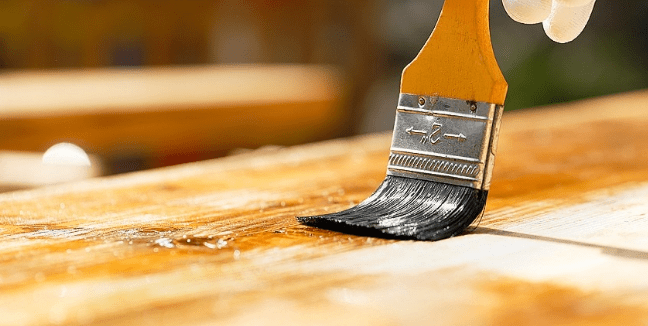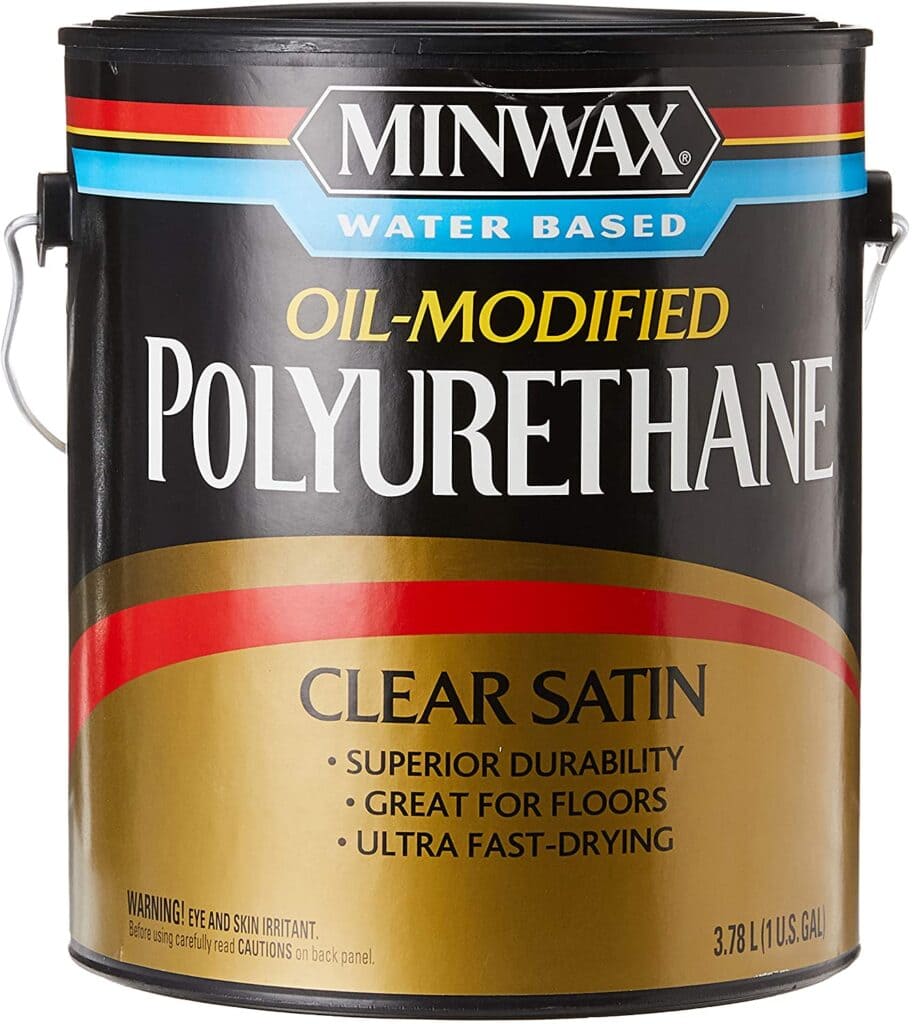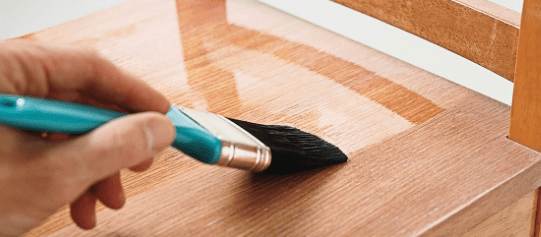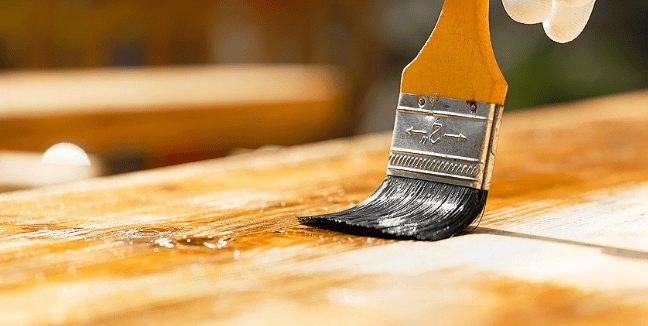
Lacquer vs Polyurethane: Lacquer is a pretty versatile substance; it is made from shellac and alcohol. You can apply it to various materials, including wood, metal, and hard and smooth surfaces. Lacquer creates a very durable, hard surface that gives a highly glossy finish when dry. Polyurethane is a type of varnish, it is synthetic. It comes in both an oil-based and water-based form.
Polyurethane and lacquer are common materials used in various construction, home improvement, and carpentry projects. In fact, I, like many of you, have cans of both sitting on a shelf in my garage.
In many ways, when comparing lacquer vs. polyurethane, they look, smell, and even behave similarly. But the bottom line is that they are quite different.
Let’s take a look at the essential properties of lacquer and polyurethane. I will also share which projects and materials work best with them. That way, you can make an informed choice about which is best for your particular needs.
What is Lacquer? An Overview
First, it is important to note that both lacquer and polyurethane are broad terms, and there are several different types of each. At the same time, though, there are basic similarities between all of the subcategories. In this article, I am going to share them generally for the sake of simplicity and brevity.
Lacquer is a pretty versatile substance; it is made from shellac (which is made from a resin extracted from the secretions of insects) and alcohol. You can apply it to various materials, including wood, metal, and hard and smooth surfaces.
Lacquer creates a very durable, hard surface that gives a highly glossy finish when dry. It lasts a long time, though I recommend that you reapply it every few years to avoid discoloration and scratches. Lacquer should be applied using an HVLP sprayer (high volume, low pressure), which helps give it such a smooth finish.
What is Polyurethane? An Overview
Polyurethane is a type of varnish, and unlike lacquer, it is synthetic. It is basically plastic in liquid form that becomes hard when it dries. Polyurethane comes in both an oil-based and water-based form, although many people prefer water-based since it gives off fewer odors and is relatively safe.
Oil-based polyurethane will add a small amount of color to whatever it is applied, while water-based adds virtually none. However, it isn’t the most durable type of varnish: it’s great for objects that won’t see a lot of wear and tear. For example, I would recommend using it on a dining room cabinet but I would not recommend using it on a dining room table. This is because dining room cabinets do not experience a lot of wear and tear like dining room tables do.
Materials Best for Lacquer vs. Polyurethane
One of the most significant similarities between these two substances is the materials on which they can be effectively applied. Both can be used on wood and metal. Very often, when you’re trying to choose between these two types of coating, you’re working with one of those substances, so that fact doesn’t help you decide.
That said, there are some differences in what they can be applied to, as well. Polyurethane can be used on plastic substances, especially water-based polyurethane, but lacquer cannot.
Over time, lacquer will corrode and destroy plastics, including ABS plastic. Typically, you can use most types of polyurethane on latex and other paints, but once again, you shouldn’t use lacquer on them without lacquer undercoat primer.
On the other hand, lacquer adheres better to Formica and wood laminate (especially furniture), while polyurethane typically does not.
Types of Items and Jobs for Lacquer vs. Polyurethane
If you’re working with plastic or wood laminate, you know which type of coating you need to use. But what about wood or metal? The answer depends on two key aspects: what you want the final product to look like and what use you’re going to have for it.
Looks Matter
First, the looks: lacquer is going to yield a much shinier, almost glazed look. It is trendy in modern styles of furniture and flooring.
On the other hand, polyurethane (particularly water-based) will be much more clear. If you’re coating wood, consider how much of the original color and tone of the wood you want to preserve. If you’re coating metal, you need to decide how shiny you want it to be.
Now is also an excellent time to talk about texture. The texture of the two substances differs when dry. Both provide a smooth coating, but lacquer is going to feel thicker and less malleable than polyurethane.
Wear and Tear
Now I think we should discuss durability. We already stated that lacquer is more durable than polyurethane. It provides a thicker coating that is much more water-resistant. Lacquer can survive spills, splashes, bangs, and bumps much more heartily than polyurethane. It also resists heat, though polyurethane does that well, too.
That said, I believe lacquer has a major downside. Lacquer tends to scratch more easily than polyurethane, which is one of its significant downsides, especially since it is better in every other way for high traffic objects that are subjected to a lot more wear and tear.
The good news is that, unless it’s a particularly deep scratch, the thick lacquer coating protects the actual object underneath, so you can usually sand it out.
Top Picks: Lacquer and Polyurethane
If you came here looking for recommendations for lacquer and polyurethane, this is your section. I put together a list of products that are trusted by us and were recently highly rated by others.
Best Lacquer

For lacquer, I recommend RUST-OLEUM Specialty Lacquer Spray. Its ability to provide an ultra-hard and durable finish makes it the top choice for lacquers.
Pros:
- Easy to apply
- Inexpensive
- Works well on wood and metal
- Good for indoor and outdoor use
Cons:
- Surfaces can end up feeling sticky if not applied correctly
- Can be difficult to spray
- Does not always appear clear when applied to surfaces
Best Polyurethane

For polyurethane, the top choice is the Minwax water-based clear satin.
Pros:
- It’s useful for a very broad array of jobs and surfaces
- Also comes in a fast-drying product
Cons:
- Not durable enough for outdoor use
- The regular is very slow to dry
- Very strong smell
Bottom Line

If you’re still wondering which is better in the lacquer vs. polyurethane debate, then I have done my job. This is because there isn’t a clear answer. Instead, which one you should use depends very much on your project itself.
If you’re coating hardwood floors or a kitchen table that your family will use every day, you should strongly consider lacquer. Unless you want to show off the natural color of the wood, the durability of lacquer wins out over polyurethane. Similarly, with metals, lacquer is typically better for items that will be used or stored outside, such as metal patio chairs or a bicycle.
Polyurethane is more appropriate for something that has already been painted or on something where you want to see the existing tone and color as it is. (Note: polyurethane will add shine, just not as much as lacquer.) It can also be easier to use, and some types are less dangerous than lacquer, though it is synthetic.
To decide which you should use, you need to analyze what you’re planning to coat, how long you need it to last, and what conditions it will face. In addition, how do you want it to look?
Again, I highly recommend the RUST-OLEUM specialty lacquer spray and Minwax water-based and oil-modified polyurethane. Refer back to this guide whenever you’re trying to decide between lacquer vs. polyurethane.

